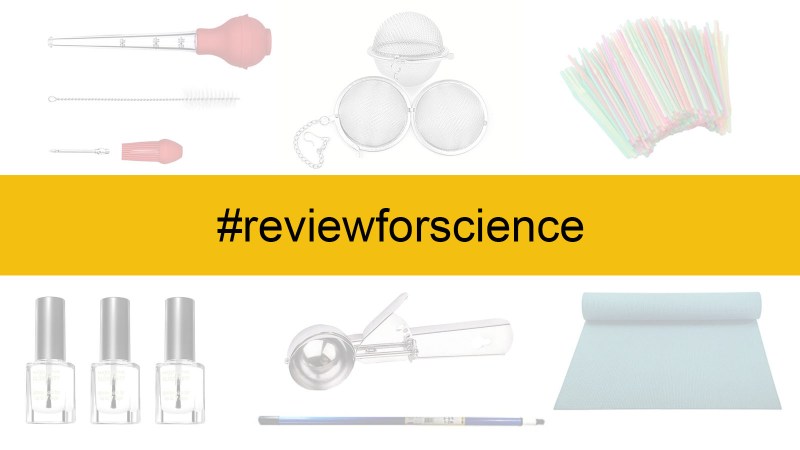If you like reading about scientists creatively using household objects for their work, you will enjoy browsing Twitter hashtag #reviewforscience where scientists are sharing stories of repurposing everyday things for their lab and field.
Research papers focus on the scientific hypothesis and the results of testing it. It is very common for such papers to leave out details of tools and techniques as irrelevant. (A solid scientific conclusion should be reproducible no matter what tools and techniques are used.) This sadly meant much of scientists’ ingenuity never see light.
We can thank Amazon user [John Birch] for this event. His son wished to study how ants from different colonies interact. In order to observe how these groups of ants react to each other while still keeping the populations separate, he wanted to keep one group of ants inside a tea strainer. He posted this technique as a review on the tea strainer’s Amazon product page, where it caught the attention of @RobynJWomack and started spreading, taking off when @DaniRabaiotti suggested the tag #reviewforscience.
Sadly, it appears our original scientist (who posted under his dad’s Amazon account) did not succeed with the tea strainer technique. But he has succeeded in drawing attention to creativity in science worldwide, as well as making his dad internet famous.
We love lab hacks here. For scientists who wish there was a place to document their creative lab hacks, might we suggest Hackaday.io?
[via Washington Post]
















The second entry currently on that hashtag is seriously cringe inducing: a review of Loctite 234790 glue by Brian Cutting. “Occasionally effective in attaching RFID tags and radio transmitters to bees. WARNING: Angry bees adhere instantly to human skin. 1/5 stars.”
the sad part is how a lot of these products will raise the prices after this
The statement: “A solid scientific conclusion should be reproducible no matter what tools and techniques are used.” is an extreme over-simplification. It’s no longer the “old days” of ancient spark-gap radios or voltaic pile batteries. Instrumentation is crucial to the advancement of science and engineering, and can be very complex. How many alternatives are there for verifying the existence of the Higgs Boson other than the Super Hadron Collider right now?
Instrumentation is critical for all scientific research. “Systematic error” due to instrumentation should be a small part of reproducibility, but if a test’s instrumentation is not exposed to the light of day, how can that test be replicated?. I think that the big reproducibility failure of many ot today’s “scientific breakthroughs” is due to incomplete or even a total absence of describing the test’s instrumentation. This applies to “real” science and not the pseudosciences like psychology (unless they are backed up with hard science like various types of brain scans used to show correlateable insights into the mind). The absence of the testing’s instrumentation may be due to short-cuts in the rush to publish to get more funding, but it’s sloppy, unscientific, and should no longer be tolerated. No more free energy, please.
there is still a lot of science to be found with just the trash lying around your house/lab, to think that time is over is laughable. and to my knowledge most of the “reproducibility failure” tend to be in the cognitive sciences not the piratical/physical sciences.